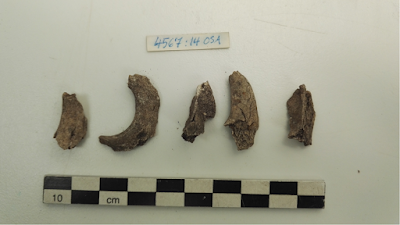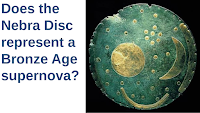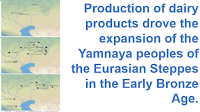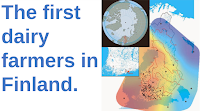Bronze age Scandinavian burial practices are well documented from southern Norway and Sweden, as well as Denmark, where a wide range of burial styles, including large elite burial mounds, gallery graves, cairns and flat ground cemeteries. Away from this area the range of practices is much less diverse. In Finland, where the Bronze Age is thought to have lasted from about 1800 to about 500 BC, the only form of burial known from this period is the cairn. There are, however, a very large number of these cairns, some estimates suggesting as many as 10 000, of which only a tiny fraction have ever been excavated. Furthermore, many of the cairns that have been investigated have yielded no archaeological material. Where material has been found beneath cairns, the most common thing recovered is burned Human bone, apparently produced when the dead were cremated. Since many of the cairns which have been investigated were excavated at a time when methods in archaeology were rather less vigorous, it is possible that many of these also contained burned bone, but that this was overlooked. However, there are other possible explanations for the boneless cairns; they may have formerly contained unburned burials in wooden coffins (something known from southern Scandinavia), which would have decomposed far more quickly than burned bone in the acidic soils present across most of Finland. Alternatively, the interpretation of these sites as burial cairns may be completely wrong, they may simply represent piles of rocks formed as agricultural land was cleared, as landmarks used by sailors, indicators of land ownership, or sacred sites of some other, non-burial related nature. These possible explanations have been debated for over a century, without any evidence being found to favour one theory over another.
Bronze Age cairns in Finland, particularly those found close to the coast, tend to be different to those constructed in the Stone Age (9000-1800 BC), being more monumental in nature. The largest of these Bronze Age cairns are the largest prehistoric monuments in Finland. The practice of cremating the dead appears to have been introduced to Finland at the beginning of the Bronze Age, and to have persisted till the end of the Iron Age, which in Finland is placed at 1050 AD. However, the way in which the cremated remains were buried changed considerably over that time, starting with large stone cairns in the Early Bronze Age, which shrank over time. Later a soil infill between the stones appeared, eventually progressing to the remains being buried beneath the ground in flat cemeteries.
In a paper published in the International Journal of Osteoarchaeology on 9 June 2022, Kati Salo, Jarkko Saipio, Maddie Hentunen, Kristiina Mannermaa, and Markku Oinonen of the University of Helsinki, present a review of cremated bone remains from cairn burials in Bronze Age Finland held in the National Museum of Finland, and provincial museums in Finland. They examine the number of burials beneath each cairn, the location of the cairns in relationship to resources such as agricultural land, and the health of those buried, as reflected by pathologies detectable on the cremated remains. They also look at the distribution of the cairns across Finland, and their timescale, introducing a number of new carbon-dates, and compare the burials to Bronze Age burials elsewhere in Scandinavia and around the Baltic Sea. Salo et al. aim to understanding the relationship between the changing use of food resources, health of the population, and burial customs over the course of the Bronze Age in Finland.
Bone material from 218 cairns was examined, including material from 76 cairns in the Satakunta Region of central Finland, where the densest concentrations of cairns are found, 50 cairns from the northern coast of Ostrobothnia, most of which have been shown to be Iron Age in origin, 36 cairns from the Southwest Finland Region, 33 cairns from the southern coast of the Uusimaa and Kymenlaakso regions, 16 from inland regions, and 7 from the Åland Islands.
The study concentrates on the Bronze Age, and includes material from 118 cairns dating to this period, but also includes material from 57 Iron Age cairns, 37 cairns that may be either Bronze Age or Iron Age, and 6 cairns that have been shown to contain material from both the Bronze and Iron ages.
The cairns range from 1.6 to 21 m in width, 1 to 20 m in width, and 0.2 to 3 m in height, with an 'average' cairn being roughly 8 m long, 7 m wide, and 1 m high. Ninety seven of the cairns are built on top of identifiable stone rings, made of larger stones than the rest of the cairn, 31 are built around large individual boulders, and 24 are built around stone cists (small stone-built coffin-like boxes or ossuaries used to hold the bodies of the dead).
The most common item recovered from the cairns other than bone was ceramic, with 58 cairns producing ceramic fragments. This was followed by iron artefacts, recovered from 42 cairns, bronze objects, recovered from 41 cairns, quartz, 41 cairns, flint, 18 cairns, other lithic items, 37 cairns, and burnt clay, 14 cairns. However, some of the ceramic, stone, and burnt clay items may have come from Stone Age settlements overlain by the cairns, while some of the metal items may post-date cairn construction.
Salo et al. obtained 15 new carbon dates from bone fragments recovered from 14 cairns during the course of the study. These were added to previously obtained carbon dates, contributing to a growing chronological database for Bronze Age Finland. Altogether, 67 dates have now been obtained from 43 cairns. This dating of cairns in Finland has enabled the connection of cairn-building activities to be connected to other events in ancient Finland, such as shifting shorelines.
Nine of the new dates obtained by Salo et al. were from Satakunta, and six were from the Åland Islands. Thirteen were obtained from cremated Human bone, one from cremated Dog bone (which was found with cremated Human bones), and one from a Sheep or Goat bone. The two bones dated from the same cairn were the Dog bone and a Human bone, both from a cairn in the Åland Islands, with both dating from the Late Bronze Age. The Sheep or Goat bone was of Iron Age origin.
The dates obtained showed that many late Bronze Age cairns in Satakunta were built on top of Late Neolithic or Early Bronze age settlements, something which had previously been suspected, but which archaeologists had been unable to confirm by now. Late Bronze Age cairns in Satakunta were also often built around large solitary stones, generally glacial erratics (large stones deposited away from their source after being carried by glaciers). Furthermore, they demonstrate a connection between the distribution of Late Bronze Age cairns and agricultural land; in the Early Bronze Age cairns tended to be built on high up on prominent features, while Late Bronze Age cairns are typically located close to good agricultural land, and often known Bronze Age settlements. In Gotland (Sweden) the Late Bronze Age saw the appearance of permanent settlements, and across southern Scandinavia population levels are known to have risen from about 1000 BC onwards, leading people to expand into new areas. These changes are likely to have been linked to changing economic circumstances. An increase in the number of bronze artefacts originating from Scandinavia has also been recorded in Satakunta in the Late Bronze Age, something not observed in other parts of Finland.
Salo et al. were able to identify the remains of a minimum of 212 individual Humans from 164 cairns. The majority of the cairns (132) nappeared to hold only a single burial, with 32 cairns holding the remains of between two and five individuals. The single cairn that contained the remains of at least five individuals also yielded Iron Age material, but with a single Bronze Age metal item. Two cairns in the Luistari cemetery in Eura were shown to contain at least four individuals. Both appear to have been repeatedly used over a long period of time, but with their oldest remains dating to the Late Bronze Age.
Iron Age cairns were more likely to contain multiple burials than Bronze Age cairns, although it is also possible that all the cairns contained more individuals than have been recorded, since the numbers are based upon the minimum number of individuals that could have produced the recovered remains. One Iron Age site, Cairn 89 from Rieskaronmäki, in Nakkila, in the Satakunta Region, is thought to contain five-to-six individuals, buried at different locations within the cairn over a period of about 270 years, based upon radiocarbon dates.
Single-burial cairns are also common in Bronze Age Sweden, although here double-burials are more common. Salo et al. also note that several other burial types are present in Bronze Age Sweden, and that in some of these multiple burials are more common.
Ninety five cairns were shown to contain identifiable Animal bones, 53 of which also contained Human remains. A further 15 cairns contained unidentifiable Animal remains; although in all of these cases the sample of material was very small, i.e. less than 3 g. The majority of these Animal bones were uncremated; 27 of the cairns were found to contain cremated Animal bones alongside cremated Human remains, but these were all dated to the Iron Age. Additionally, some of the cremated Animal bones found in Bronze Age cairns may actually come from older, Stone Age, settlements covered by the monuments. This absence of cremated Animal remains from Bronze Age cairns in Finland appears to be significant, implying that the burning of Animals with the deceased and/or the deposition of burned Animal remains alongside the deceased, was not a common practice. These practices were common in Middle and Late Iron Age burials in Finland, and in Bronze Age burials elsewhere in Scandinavia. This difference in timing may be linked to the later adoption of field-cultivation in Finland than elsewhere in Scandinavia.
Iron Age cairns in Finland were also more likely to contain artefacts than Bronze Age cairns, and were more likely to be built on top of older settlements, which may also reflect improving agricultural knowledge.
Between fifteen and eighteen individuals from fifteen Bronze Age cairns and seven individuals from Iron Age cairns could be diagnosed with porotic hyperostosis; a pathological condition in which patches of spongy bone form on the cranium as a result of anemia, which in turn may be a result of malnutrition or a genetic condition. A further nineteen cairns, ten of which could be dated to the Bronze Age, produced remains with signs of osteoarthritis.
Two Iron Age Cairns and two Bronze Age cairns produced remains with signs of having lost teeth before death. Two Bronze Age cairns produced remains with signs of periapical lesions (tissue produced by a bone or tooth in response to an infection), and one Bronze Age and one Iron Age cairn produced remains with signs of periosteal bone formation, which is generally provoked by an injury. Osteochondritis dissecans, caused by repetitive trauma to a joint, was observed in remains from a Bronze Age cairn, and may also be present in remains from an Iron age Cairn. One Bronze Age cairn produced a vertebra with a possible Schmorl's node, a form of spinal disk herniation, which would probably have been caused by repetitive injury.
The commonest form of pathology seen in archaeological material is dental. However, teeth seldom survive cremation, and the material used in Salo et al.'s study was no exception to this, with only small fragments of tooth found. Some of the alveolar fragments found showed signs of dental problems - tooth loss and periapical lesions - showing that these conditions were present in the population, but providing little other information.
Cribra orbitalia and porotic hyperostosis, spongy bone formation around the orbit and cranium, respectively, both of which are caused by chronic iron deficiencies, were observed in several sets of remains. These can be caused by a direct shortage of iron in the diet, by other dietary problems, such as a lack of vitamin B12, or genetic conditions, something which today is most common among people living around the Mediterranean Basin. Similar conditions can also be caused by Malaria, something common in Finland until the early twentieth century.
The mostly densely populated areas in Bronze Age Finland were around the coast, making it highly likely that Fish were an important dietary resource. Remains from archaeological sites close to the coast around Europe over a wide range of times have been shown to be more prone to porotic hyperostosis and cribra orbitalia than inland populations, and it has been suggested that these conditions might have been caused by parasites contracted from Fish.
The adoption of agriculture has been widely linked to declining health in many Human populations, and the Bronze Age is thought to have been the period during which agriculture became widespread in Finland.
Cribra orbitalia and porotic hyperostosis have been shown to be rare in populations from the Neolithic-Bronze Age transition in southern Sweden, and the Late Bronze Age of Estonia. These conditions have been shown to be very common in Early Bronze Age Poland, where they are found in more than 20% of the population, however, this is in a sample of remains with much better overall preservation, so direct comparison is difficult.
The other common pathology found in the collection is marginal osteophytes, or signs of osteoarthritis. This is found in 10 individuals, who are typically older than the majority of the samples. Of the 10 individuals, all but one were found in Satakunta, and all but one were found in cairns built on top of former settlements. The majority of the remains with osteophytes appear to have been male, which is common in ancient populations. This may be a sign that the individuals had been undertaking hard physical labour, associated with agriculture, which is believed to have been adopted in Satakunta before other regions of Finland. The practice of building cairns on top of former dwelling sites appears to have been linked to the adoption of agriculture, something which had happened by the Late Bronze Age in Satakunta, but which did not happen until the Iron Age in other parts of Finland. Other studies have shown that early agriculturalists were particularly prone to osteoarthritis of the vertebral joints, which seems to be the area most affected in the individuals from Satakunta.
Another practice that appears to have been adopted earlier in Satakunta than other areas is that of placing more than one individual beneath the same cairn. These cairns with more than one internment were also the ones which had the highest rates of osteophytes and porotic hyperostosis, with these individuals also being more likely to be male. Thus these were older male individuals who had been involved with hard manual labour, probably agriculture related, and were suffering from iron-deficiency, something also associated with the adoption of agriculture, which led to lower levels of meat consumption. Analysis of Animal bone from Late Bronze Age cairns in Satakunta suggests that Seal meat was disappearing from the diet at this time.
Other pathologies, such as trauma or periostitis, were much less common, but this does not mean that they were absent from the population. Other studies of cremated remains have shown that these are generally much less common, suggesting that this is related to the cremation process, rather than the health of the population, possibly because new bone growth tends to split away from older bone when burned. Degenerative joint disease and porotic hyperostosis are more likely to survive cremation, and have been shown to be more common in other populations where cremation was practised.
It is likely that future excavations will uncover more remains from cairns in Finland, and that this will lead to a more detailed understanding of cairn-building people and the lives they lead. Salo et al. suggest that more detailed studies of Iron Age cairns may lead to a better understanding of the transition to an agricultural lifestyle across Finland.
Strontium isotope analysis could potentially be used to determine the origin of the individuals within the cairns. Studies using this method have been carried out in Estonia, and Gotland (Sweden), where genetic analysis of Bronze Age burials has also been undertaken, although this is not likely to be possible in Finland, where cremation appears to have been a universal practise, as DNA cannot usually be recovered from cremated remains.
The Bronze Age is the earliest period in Finland where sufficient remains exist for a large scale comparison between sites, and Salo et al.'s study provides insights into this little-known area of the European Bronze Age. The common Bronze Age practise appears to have been to bury a single individual beneath a large cairn, although this appears to have changed over time, with multiple burials appearing in the Late Bronze Age and becoming more common in the Iron Age, apparently reflecting a change in burial custom associated with the spread of agriculture. These single burials appear to have been much less likely to have been accompanied by Animals or artefacts than contemporary burials in southern Scandinavia, probably reflecting cultural and economic differences between the two areas. Porotic hyperostosis is more common than in other Bronze Age populations around the Baltic Sea, and osteophytes are seen to appear earlier in Satakunta than other areas of Finland, apparently connected to an earlier adoption of agriculture.
See also...
Follow Sciency Thoughts on Facebook.
Follow Sciency Thoughts on Twitter.











